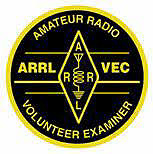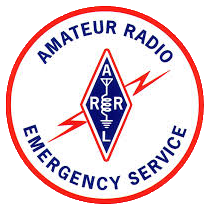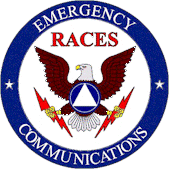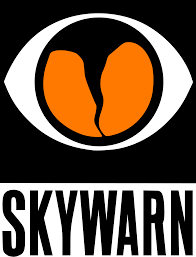Emergency Communication Techniques
- Details
- Hits: 15215
EMCOMM techniques are different from everday communications because of the stress, competing demands, and uncertainty that surrounds the sudden onset of an emergency. Life and death communications are not part of our daily experience. In an emergency, any message may literally affect the lives of patients, stranded civilians, or shelter inhabitants. An unclear message, or one that is altered, delayed, misdelivered, or lost can have disastrous results.
Listen
Listening is half of an emergency communicator's job. You can't communicate the a message if you don't actually hear it. You must learn to focus on receiving the message and tune out distractions.
Sometimes the job of listening is made more challenging because you are operating in a noisy environment or there may be static or interference on the frequency.
Speak Clearly
How you use your microphone seems simple, but there are many things that could affect how well your audio sounds. Each microphone has different pickup characteristics and the radio may applify the signal differently. In theory, the optimum method of transmitting is to hold the mic close to your cheek, and just off to the side of your mouth. Talk across, rather than into, the microphone. This will reduce breath noises and "popping" sounds that can mask your speech.
Always speak in a normal, clear, calm voice. Speaking loudly can result in over-modulation and distortion, and will not increase volume at the receiving end. Remember to speak slowly when communicating a message and at a regular pace when communicating tactical traffic.
"Voice operated transmission" (VOX) is not recommended for emergency communication since background noise or an impromptu discussion can trigger it.
When using a repeater, be sure to leave a little extra time between pressing the push-to-talk switch and speaking. Signal detect time, CTCSS (often called pl) decode time, transmitter rise time create a delay between the time you key the microphone and the repeater is retransmitting your words. A short pause after keying the microphone will ensure that your entire message is transmitted, avoiding time-wasting repeats for lost first words.
Lastly, pause a little longer than usual between transmissions any time there is a possibility that other stations may have emergency traffic to pass. A count of "one, one thousand" is usually sufficient.
International Distress Frequencies
- Details
- Hits: 18736
Most distress frequencies fall within the HF spectrum. Many HF radios will operate, at least in receive mode, outside of the amateur band, allowing us to monitor those frequencies. In addition, there are actually recognized Amateur Radio Distress Frequencies.
For most of the history of radio communications 500 kHz has been the recognized international distress frequency for sea. While it is supposedly still monitored, it has ceased to be used as a primary sea distress calling frequency as of 2010. Other frequencies are being officially phased out, but that doesn't mean someone might not attempt to use it, especially if that's all they have.
Aircraft utilized 121.5 mHz and 243 mHz, usually monitored by commercial aircraft and airports. These were also monitored by satellite but was discontinued in 2010, partially due to the high number of false alarms. These systems are still used in General Aviation aircraft. Maritime vessels also use 156.8 for short-range distress communications, similarly phased out in 2010.
Net Control Operator Best Practices
- Details
- Hits: 16242
Types of nets:
|
Open Net |
Stations call each other and directly pass traffic. A typical example would be a Tactical Net or our Stand-By Weather Nets. |
|
Directed Net |
Stations only call Net Control directly. Passing of traffic is controlled by Net Control station. |
How a directed net works
A directed net has an active Net Control station who coordinates traffic. The ARES/EMCOMM net is an example of a directed net. Stations wishing to deliver a message or pass information would first call Net Control, and when acknowledged, make your request. Net Control will then coordinatethe passing of traffic or
Activation
- Details
- Hits: 15537
We’ve discussed activation with regards to weather nets and the rules there apply here as well, but I would like for us to expand on them.
We normally initiate informal Weather Nets when severe conditions exist or warnings have been issued. Typically it is “Self-Activation”, because we know to switch to the repeater frequency to begin reporting any sighted conditions. However, everyone has a different idea of what is “severe”, so there is often no clarity of when to open an informal net or elevate to a higher level net. However, the process for the most part works for us and should continue.
Served agencies are another matter. We may not even be aware of a situation where our services may be needed or when. As a result, a more formal system is required. The formal system is also a portion of our Weather Net protocol.
The Activation system is initiated by the served agency. The served agency will have a primary and several backup contacts for initiating deployment. Once the served agency makes contact with any one of the activation liaisons the remainder of the process falls on our organization.
Five Myths About Net Control
- Details
- Hits: 17465
Being net control is not what many people think it is. Net control is not all-powerful, nor particularly glamorous. It is, however, important to the smooth running of amateur radio operations during an exercise, special event, or actual emergency. That being said, on to the myths:
Various Roles In EMCOMM
- Details
- Hits: 15629
During the past year we have discussed a variety of issues related to EMCOMM and the variety of missions available for Amateur Radio operators. We’ve even discussed non-emergency involvement in community events, field day, fox hunts, and balloon launches.
Recent discussions with various Amateur Radio operators has made me realize that I’ve not done a good job of discussing the various roles an amateur radio operator can play.
Everyone has different levels of knowledge, experience, skills, and even physical abilities that influence how and where they can, and should, participate.
Not everyone needs to be deployable to the hospital to be involved in EMCOMM, nor do they need to necessarily take all the FEMA courses previously discussed. Some will not want to take all the courses, others are not likely to be able to deploy in an emergency, and others may just not be interested in working in that environment. That’s okay, there are other ways to help. That being said, I want to continue to encourage those who are interested to take those courses and pass the FEMA certificates along to me. We’re still a few folks shy of the target number for the team.
Tanner/Carrollton Hospital As A Served Agency
- Details
- Hits: 15855
Tanner Hospital and Carroll ARES currently operate under a Memorandum of Understanding (MOU). Under this agreement ARES coordinates the deployment of amateur radio operators to the hospital upon activation by the hospital’s emergency management staff.
Many of you are already ARES members. Those of you who are not please feel free to sign-up by clicking on the "Join ARES" link on the sidebar menu at WX4BK.com and filling out the form.
ARES is an organization that operates interdependently of radio club leadership structure. That being said, there must be a cooperative effort between all radio clubs, amateur radio operators, and ARES to provide a united front to served entities.
Special Events as EMCOMM Training
- Details
- Hits: 14882
One of the problems with practice, courses, and training activities such as this, is the fact that theory fails the moment it meets reality. Even exercises suffer from the fact those planning the exercise are, well, planning. Preconceived ideas are brought to the exercise by the planner or planners.
Of course, the planned exercise usually suffers the same fate as every other plan, it too will show its flaws the moment it meets reality.
So, what do we do to improve our ability to refine our skills and deal with unexpected circumstances? There are several options. We can improve our skills by participating in special activities such as fox-hunting, balloon launch and tracking, and special events.
Tonight we’re going to discuss Special Events. Special Events are unique from the other mentioned activities because we are serving other organizations and people we may never have worked with before. As a result, the participants, routes, weather conditions, and unexpected emergencies will change from year to year.
So what are the similarities to an real EMCOMM event? Here are a few:
Simulated Emergency Tests
- Details
- Hits: 15267
A Simulated Emergency Test is exactly what the name implies: A planned simulation of an emergency designed to test our ability to respond to both anticipated circumstances and unanticipated events. The purpose of a SET is to:
- To find out the strengths and weaknesses of ARES and the National Traffic System (NTS), the Radio Amateur Civil Emergency Service (RACES) and other groups in providing emergency communications.
- To provide a public demonstration to served agencies such as Red Cross, Emergency Management, hospitals, and through the news media of the value to the public that Amateur Radio provides, particularly in time of need.
- To help radio amateurs gain experience in communications using standard procedures and a variety of modes under simulated- emergency conditions.
One important aspect of the SET is to ensure operations on emergency power and without a repeater. Carroll County is blessed with a repeater that operates from a facility that has extensive short-term and long-term backup power capability. However, the repeater has been known to have issues during adverse weather conditions.
UHF/VHF simplex operation is a challenge in our area due to trees and hills, so utilizing Near-Vertical-Incidence-Skywave (NVIS) on HF may be the better option. HF, for most of us, is a DX (distance) activity, so NVIS isn't something we normally work with. I've spoken about NVIS before, but the basic idea is to do what we normally try to avoid, operating with an antenna close to the ground, which causes more vertical propagation which bounces off the atmosphere and is reflected in a 100-500 mile cone surrounding the transmitter. Higher antennas will mostly skip right over nearby stations. I would recommend everyone consider having 80 and 40 meter antennas capable of being flown as low as 15ft above the ground. Due to the nature of atmospheric reflection, 40 and 80 meters tend to be the only reliable NVIS bands.
Operators should, whenever possible, be prepared to switch to backup power as part of the test, as a real emergency may very well include power outages.
APRS/UI-View Home Station Setup
- Details
- Hits: 14921
Setting up UI-View can be daunting for some, especially if you want to interface it with a radio. In the interest of getting people up and running I have created a setup guide for my preferred configuration. I'm open to suggestions and corrections, as I want this to ultimately be a quick-start guide. These instructions assume you are installing at home with an internet connection and/or (optionally) a radio.
Installing the UI-View 32 software
First, you need to download the program and open/run it. This is actually the installer, so let it run and install with the default settings.
Install PA7RHM Map Server (Strongly Recommended)
PA7RHM is a map server that will allow UI-View to download maps of your location off the internet and also store maps for use while you are mobile. You can download PA7RHM's updater and then, from his "updater" utility download and install the map server. It does all the work for you!
Install AGWPE (optional)
If you intend to interface with a radio you will need a hardware or software "Terminal Node Controller" or TNC for short. I use a free software TNC program named AGWPE, which can be downloaded.The AGWPE download is not an installer, it's a "zip" file. So when you open it you'll need to extract it to a directory and run the setup program. Once complete you'll have a new icon by your clock on the start bar. Right-click and select "launch IBrowser". Login with the username LOGIN and the password as "password". A new menu will appear, click on "New Radio Port". Select "Sound Card" from the pull-down menu and click "Next". Select 1200 from the pull-down menu and click Next. Select "Single" and click Next. Pick a name, but I used "APRS" and click Next. Use "1200" for the on-air baud rate and click Finish. Close the browser.
Page 6 of 7




